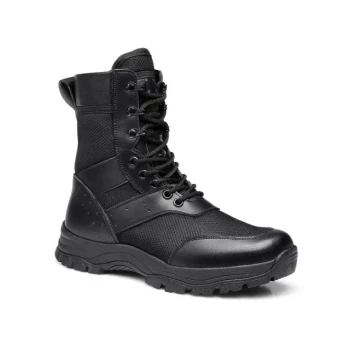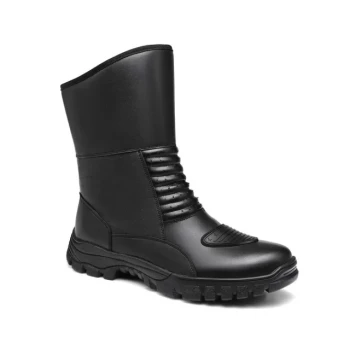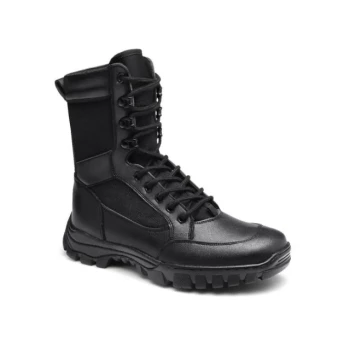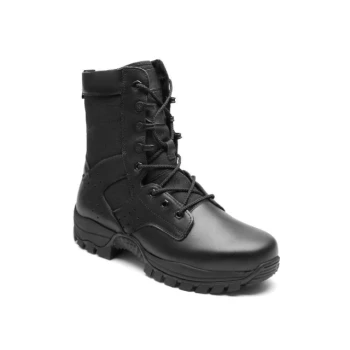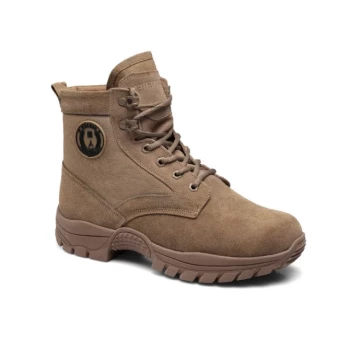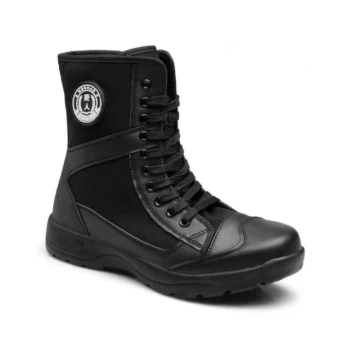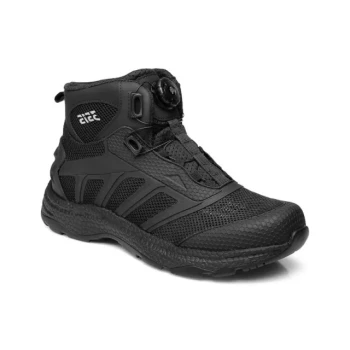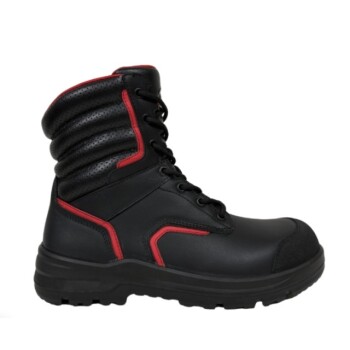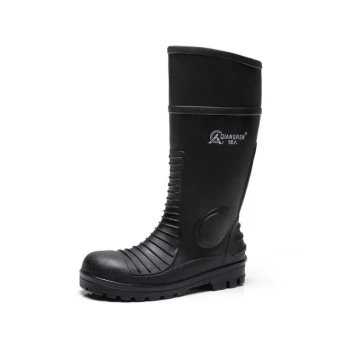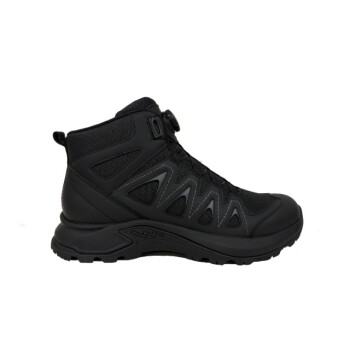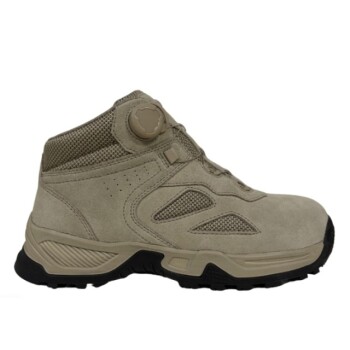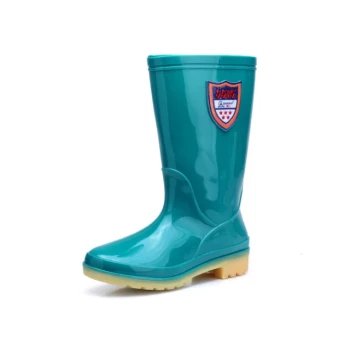In short, yes. Both tactical and combat boots almost always require a dedicated break-in period. This process is essential for allowing the boot's durable materials to soften and mold to the unique contours of your feet, transforming a stiff, new piece of gear into a comfortable and reliable tool.
The core issue isn't just about initial comfort; it's about performance and safety. A proper break-in period is a critical step that prevents painful blisters and ensures your boots support, rather than hinder, you when it matters most.
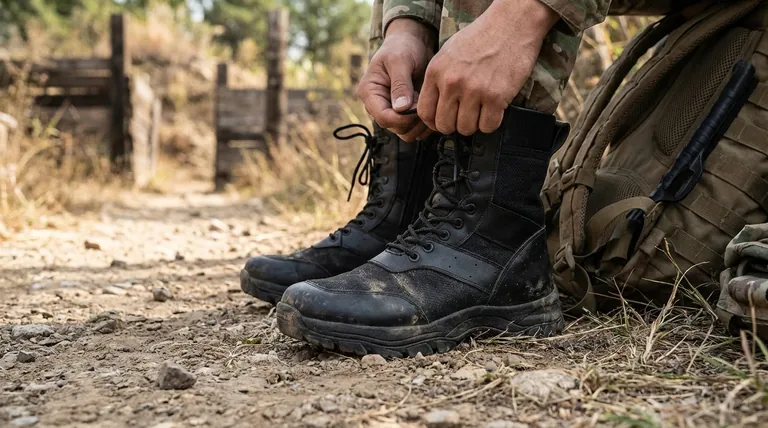
The Purpose of a Break-In Period
Understanding why you need to break in your boots is the first step toward doing it correctly. It’s a process of conforming a mass-produced item to your specific anatomy.
Why Stiff Materials Need to Adapt
Tactical and combat boots are constructed from robust materials like full-grain leather and heavy-duty synthetics for a reason: protection and durability. These materials are inherently stiff out of the box.
The break-in period introduces heat, moisture, and repeated flexing from your foot's movement. This gradually makes the materials more pliable, allowing the boot to bend and move with your foot instead of against it.
From Generic Fit to Custom Mold
No two feet are identical. The break-in process effectively creates a custom mold of your foot inside the boot.
This custom fit eliminates empty spaces and pressure points. It ensures that your heel is locked in place and your toes have room to move, drastically reducing the friction that causes hotspots and blisters.
Tactical vs. Combat Boots: A Key Distinction
While both boot types benefit from being broken in, the intensity and duration of that process often depend on their intended use and construction.
The Tactical Boot: Built for Agility
Tactical boots are engineered for versatility and speed. They are generally lighter, more flexible, and often feel more like a heavy-duty athletic shoe.
Because of their more forgiving construction, many tactical boots require a significantly shorter break-in period. Some may feel comfortable after just a few hours of wear around the house.
The Combat Boot: Built for Endurance
Combat boots are designed for maximum durability, protection, and ankle support in harsh environments. They typically feature thicker leather, more rigid soles, and a taller shaft.
This robust construction means a more deliberate break-in is non-negotiable. A true combat boot often requires a longer period of gradual wear to soften its structure and prevent injury during demanding use.
Common Pitfalls to Avoid
Mistakes made during the break-in period can lead to discomfort, damage your feet, and create a negative association with an otherwise excellent pair of boots.
Rushing the Process
The single most common mistake is wearing new boots for a full day of work or a long hike right out of the box. This is a direct path to painful blisters.
Start by wearing them for just one or two hours at a time indoors. Gradually increase the duration and introduce more demanding activities like walking outside or climbing stairs.
Ignoring Hotspots
A "hotspot" is any area where you feel persistent rubbing or pressure. Do not try to "push through" this feeling.
The moment you feel a hotspot, take the boots off. Your feet are telling you where a blister will form. Address the issue by adjusting lacing, trying different socks, or allowing the boot more time to stretch.
Making the Right Choice for Your Goal
Your approach should be dictated by your specific needs and the type of boot you choose.
- If your primary focus is immediate comfort and versatility: A lighter tactical boot is likely your best choice, but still plan for a minimal break-in period of a few short wears.
- If your primary focus is maximum durability and protection: Select a robust combat boot and commit to a structured break-in schedule over several days or even weeks before relying on it.
- If you are preparing for a specific event or mission: Begin the break-in process well in advance, simulating the conditions you will face by wearing your intended socks and carrying weight.
Properly breaking in your boots is the first step in ensuring they will perform when you need them most.
Summary Table:
| Boot Type | Break-In Intensity | Key Characteristics |
|---|---|---|
| Tactical Boots | Shorter & Lighter | Lighter, more flexible, built for agility and speed. |
| Combat Boots | Longer & More Deliberate | Thicker materials, rigid soles, built for maximum durability and protection. |
Ensure Your Team is Equipped for Success
As a large-scale manufacturer, 3515 produces a comprehensive range of high-performance tactical and combat boots for distributors, brand owners, and bulk clients. Our expertise ensures every pair is built with the durability that demands a proper break-in for ultimate performance and safety.
Let us help you equip your team with reliable footwear.
Contact us today to discuss your specific needs and explore our full production capabilities.
Visual Guide
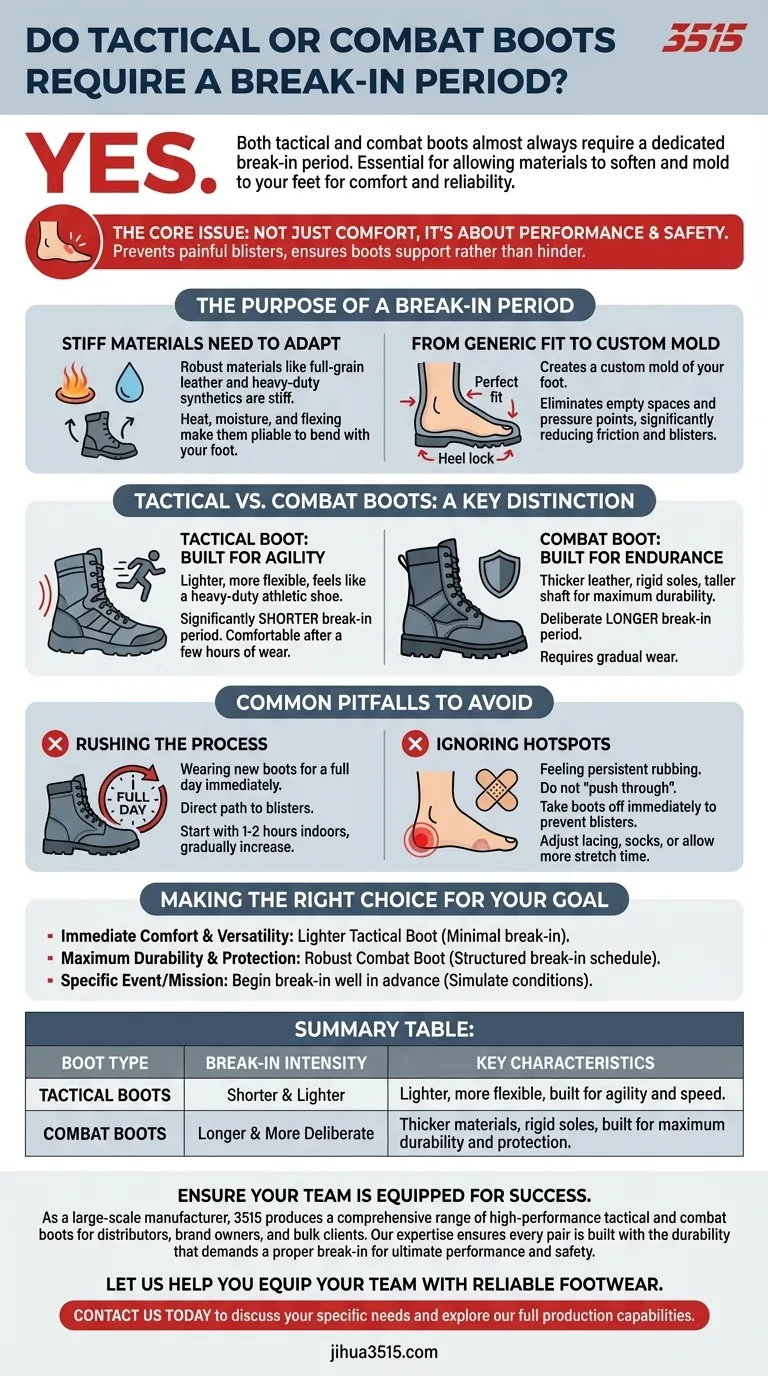
Related Products
- Durable Leather High-Ankle Tactical Boots for Wholesale & Custom Manufacturing
- Wholesale Tactical Boots High-Traction & Reflective for Bulk & Brand Orders
- Durable High-Ankle Tactical Boots Wholesale Manufacturer for Custom & Bulk Orders
- Durable Leather Tactical Boots Wholesale & Custom Manufacturing for Brands
- Durable Military Combat Boots with Water Drainage for Wholesale & OEM
People Also Ask
- What additional comfort features should be considered in tactical boots? Enhance Endurance and Performance
- How does the material of tactical boots affect their performance? Choose the Right Material for Your Mission
- What features distinguish a tactical boot from regular boots? Uncover the Key Design Differences
- How do tactical boots differ from regular footwear? A Guide to Purpose-Built Performance
- Why do tactical boots have high ankle support? Unlock Maximum Stability & Injury Prevention
